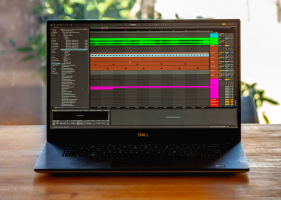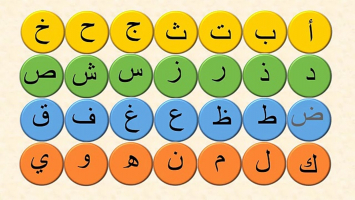Top 7 Best Websites to Learn Music Theory
You will not know what you are playing or how to play in a particular scale if you don't know anything about music theory. Here are some of the best websites ... read more...to learn music theory for everyone.
-
If you know nothing about music theory, this is the place to start. Ableton, an instrument maker and community for artists, created the course specifically for beginners to learn music theory for free. It will take you step-by-step through the different stages of music creation. It will teach you the difference between drums, bass, chords, and melodies, and teach you the basics of beats, notes, and scales. If you are a beginner, let's access Ableton's website. You should start with the shortened version video. Everything is available at Ableton's website.
All exercises are interactive, which is great because you are learning by doing. After completing the course, you can move on to advanced topics such as major and minor scales, triads, etc. Ableton's course is notable for how easy it is to understand and how quickly you will learn the nuances of music theory. And all you need is a web browser, nothing more. Ableton lets you try the standard for free for several months. That means some of the tracks you have created will not be saved or exported. You should buy more service packages in combos rather than buying individually. The price will be more favorable.
Website: https://www.ableton.com/

Photo by Clark Young on Unsplash Ableton Youtube Channel -
Berklee Online was founded in 2002. Its mission is to provide access to affordable, high-quality programming to aspiring musicians and performers around the world. Music lessons are available for free download from the website and through a growing network of partner sites. These free music lessons are also available on digital file-sharing networks. While Berklee Online strongly opposes plagiarism of copyrighted music online, they believe that file sharing offers new opportunities for musicians to learn, promote and distribute their work.
The groundbreaking program offers free music lessons and encourages musicians to share and distribute these music lessons online. Berklee Online's lessons are available for free and are made up of a growing catalog of MP3 files, QuickTime movies, and PDFs from a curriculum developed by the their world-renowned instructors. The Berklee Online program is designed to create an open exchange of ideas for musicians everywhere and to spread the Internet as a means to achieve unprecedented access to quality education. Berklee believes that digital distribution networks will have a significant impact on the future of music and music education. Their online students come from over 140 countries around the world. Although bonded by a common love of music, their backgrounds are diverse. Students even include producers who run major recording studios, executives at industry-leading technology and business companies, and so on.
Website: https://online.berklee.edu/

Photo by Paulette Wooten on Unsplash Berklee Online Youtube Channel -
MusicTheory is one of the best websites to learn music theory. It starts with the very basics and then works up to more complex concepts. So you should not rush as you have to understand the basics before continuing. Sometimes it takes much time to follow and can be more difficult if you do not read the notes. It is perfect for learning the piano but can also be applied to other instruments.
This site is great for anyone trying to learn music, regardless of their pre-existing music skills or knowledge. It combines a variety of music lessons that range from simple note names to complex seventh chord inversions. The exercises to use in the classroom with beginners are “Interval Recognition”. Not only can you adjust your practice based on the level of your students, but you can also enable challenge mode to track student performance.
Students will enjoy learning about music at this engaging site. More than thirty lessons teach students the basics of music including staff, treble and bass clef, key notation, intervals, etc, in an entertaining way. It helps students improve their recognition of notes, intervals, and triads on the staff, different key symbols, and notes on the keyboard. Keyboard, brass, and guitar trainers are also available. Useful utilities for music teachers include a chord calculator, a staff paper generator, and a matrix generator. On MusicTheory you will also find a variety of exercises, including theory, ear training, keyboard or guitar recognition. There is also an option at the bottom of the page that allows teachers to customize their assignments with specific links.
Website: https://www.musictheory.net/

Photo by Joshua Woroniecki on Unsplash Teton Music Youtube Channel -
The website Teoria.com is dedicated to the study and practice music theory as well as the development of auditory skills. In 2006, teoria.com received the MERLOT (Multimedia Educational Resource for Learning and Online Teaching) Classic Award for music and was vetted by the organization. Their exercises and instructions are contained in the first and second editions of From Sound to Sign by Michael Houlahan and Philip Tacka, published by Oxford University Press. Conservatories, universities and music schools in North and South America, Europe, Asia and Africa use their websites as part of their teaching materials.
This site is an extensive collection of subjects studying music theory and analysis. The learning objects on the website are divided into three categories Tutorials, Exercises and References. The Tutorial includes Music Reading, Intervals, Scales, Chords and Mix Functions. Exercises include Rhythmic Spelling, Key Reading, Intervals, Scales, Key Keys, Chords, Harmony Functions, and Jazz. References include Music Readings, Intervals, Scales, Chords, and Writings (the Article subcategory includes several objects of analysis.) The information is divided into short easy-to-remember sections. The animations are clear and usually do not need accompanying text to understand. The site has great reuse potential, individual sections of the site can be inserted in a number of ways into the instructor's instructional sequence. Teoria presents music theory concepts in great detail. It has many possibilities for teachers or students to customize lessons according to their specific needs.
Website: https://www.teoria.com/

Photo by Ben Mullins on Unsplash The Mindful Violin Teacher Youtube Channel -
Ear Master helps you train your ears to learn the difference between pitches, intervals, keys and chords. Among other things, you can take tests on rhythm reading, chord recognition, interval recognition, and interval comparison. You have a helpful tutor who guides you through the exercises and helps you learn the essentials. One of the websites you can use to help you improve your listening skills as well as gain skills like singing. It incorporates a large number of lessons covering different levels of music theory. The focus is on practical exercises, with the amount of written material presented to a minimum. These exercises fall into different categories. With rhythm-mimicking exercises, the site provides markers to show accurate information about your timing, as well as note and rate what you play back. It is a bit confusing at first, but it gets easier with practice.
With the handy exercise setup menu, you can also customize your lessons. You can choose the chords, intervals or note values used, and create your own custom chords to test. You will actually have a lot of fun creating weird chords and trying to distinguish their properties from other chords. With the tools available, you can master the Ear Master with a little time and effort.
Website: https://www.earmaster.com/fr/

Photo by Stefany Andrade on Unsplash EarMaster Youtube Channel -
The Tonal Center is an interactive website for composers and music theorists that explains and demonstrates some of the key concepts of timbre, includes chords, scales, rhythms and modulations. Most of the music examples are illustrated with a midi file - just click on the relevant link to listen. Although it provides the basics, this site is a fun site to learn music theory without being monotonous or boring. You will always have access to knowledge in a new way.
This site is one of the best sites to learn music theory. It should be of use to any composer looking to expand his or her knowledge of tonal and scalic resources beyond what is found in most conventional music theory publications and with the music theorist, it will provide a valuable source of information and ideas that can be used for further exploration. The theoretical style and some of the concepts they introduce are quite novel, used to present the complexities of music in a logical and coherent way. The web page can only be viewed perfectly using Netscape Navigator/Communicator 4 or Internet Explorer 3 or 4. With earlier versions of these programs, the web page is fully readable, but a format number will be incorrect. Both of these browsers are free and can be downloaded from Netscape and Microsoft. The Tonal Center is best viewed if you have Verdana and Georgia fonts installed on your system - these fonts are available for both Apple Macintosh and Windows and can be downloaded for free from Microsoft.
Website: http://www.tonalcentre.org/

Photo by Marius Masalar on Unsplash 
Photo by Lorenzo Spoleti on Unsplash -
Learning music is not just about what you read, it is about what you see. LightNote is the most beautiful website to learn music theory. This music theory website provides step-by-step instructions for understanding sound waves, harmonies, scales, chords, and keys. The entire course is presented in FAQ format, answering common questions beginners will have. For example, while teaching harmony, it plays two pieces of music and asks why one sounds good and the other is bad. It then explains the answer, followed by a short quiz to see if you understand. This two-way learning method is very interesting and effective because it is interactive, you can also practice right after learning the theory. This helps you to understand and remember longer.
You can create your own music, build your own chord progressions, or even improvise your own tunes. You will be left out of all the jargon and complicated notation. With LightNote, you will learn basic music theory in a simple way with short lessons, no confusing symbols, and no instruments needed. Exercises with different difficulty levels increase, decrease, random and at the same time help you practice better. Learning progress indicator for an overview of your abilities, showing averages of last exercises so you know what your improvement is.
Website: https://www.lightnote.co/

Photo by Alphacolor on Unsplash 
Photo by Tim Gouw. on Unsplash




























